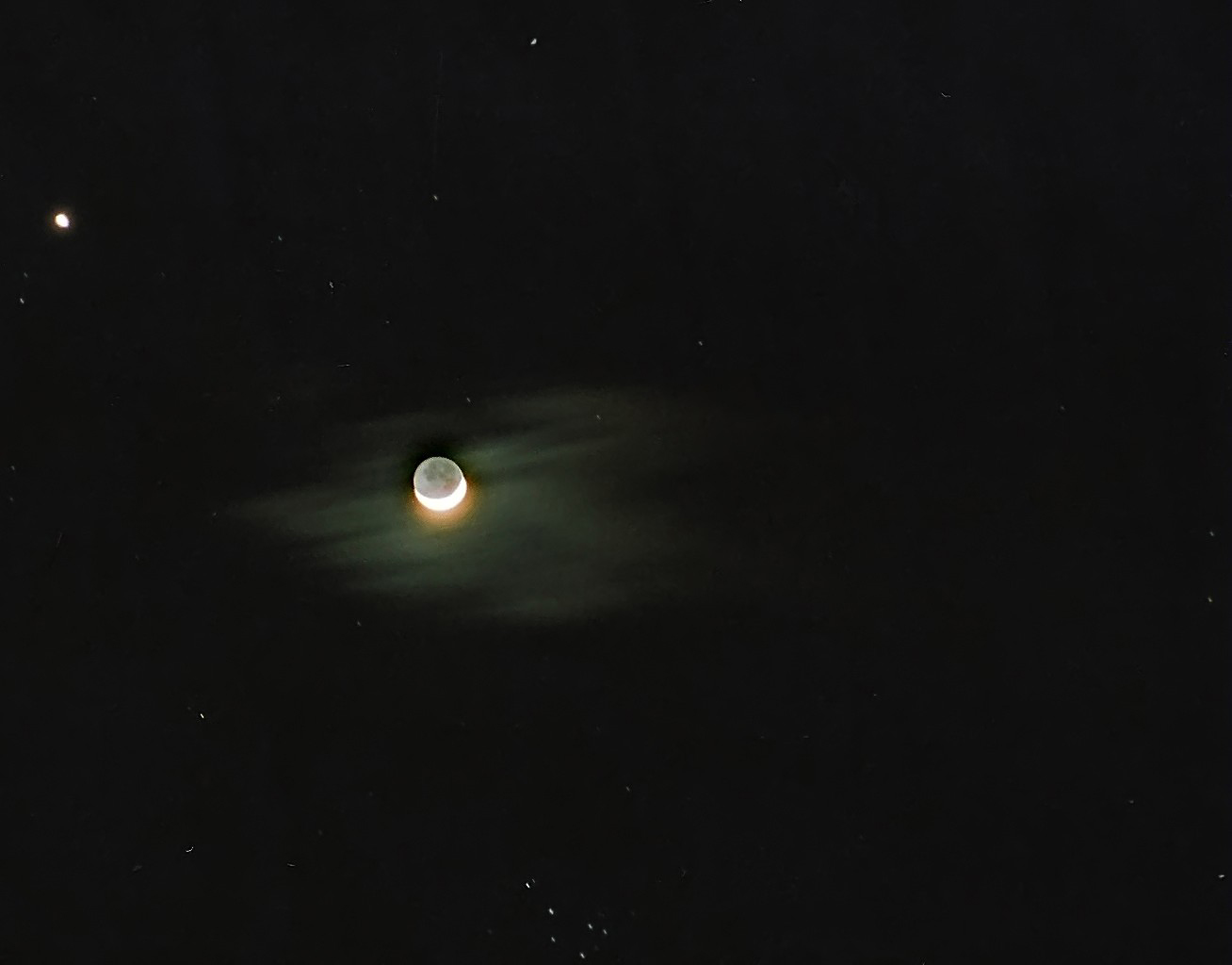[/caption]
Except for the Sun, the Moon and Venus are the two brightest objects in the sky. You just can’t miss them.
Astronomers measure relative brightness of objects in the sky with a term called magnitude. The Sun has the highest magnitude of any object in the sky, at -26.73 apparent magnitude. The brightness of the Moon, for comparison, has a magnitude of -12.6. These numbers are done on a logarithmic scale. So the brightness of the Sun is actually 449,000 times brighter than the full moon.
The maximum brightness of Venus is -4.7 magnitude, which is a fraction of the brightness of the Moon (and the Sun!).
So why is the Moon so much brighter than Venus? It’s closer. The distance to the Moon is about 384,000 km, while the closest distance to Venus is about 38 million km. In other words, the Moon is about 100 times closer to Earth than Venus.
Both the Moon and Venus can cast shadows when they’re in the sky. The Moon can be bright enough to almost read by. It’s easy to navigate when the full moon is in the sky. When the Moon isn’t in the sky, but Venus is very bright, you have to look carefully to detect shadows cast by Venus.
One of the most amazing things in astronomy is when Venus and the Moon are both in the sky; especially when they’re very close to one another. Make sure you head outside to see the Moon and Venus with your own eyes.
We have done several articles informing readers about times when both the Moon and Venus are visible in the sky. Here’s an example, and here’s another.
And there are some great articles out there on the Internet. Here’s one from SPACE.com, and another from Astronomy Picture of the Day.
You can listen to a very interesting podcast about the formation of the Moon from Astronomy Cast, Episode 17: Where Did the Moon Come From?


Venus and the Moon are the most beautiful objects in the night sky